Solar eclipse of June 21, 2058
A partial solar eclipse will occur on June 21, 2058. A solar eclipse occurs when the Moon passes between Earth and the Sun, thereby totally or partly obscuring the image of the Sun for a viewer on Earth. A partial solar eclipse occurs in the polar regions of the Earth when the center of the Moon's shadow misses the Earth.
| Solar eclipse of June 21, 2058 | |
|---|---|
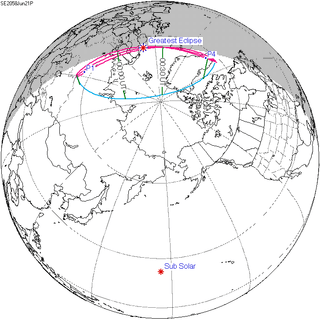 Map | |
| Type of eclipse | |
| Nature | Partial |
| Gamma | 1.4869 |
| Magnitude | 0.126 |
| Maximum eclipse | |
| Coordinates | 65.9°N 9.9°E |
| Times (UTC) | |
| Greatest eclipse | 0:19:35 |
| References | |
| Saros | 157 (1 of 70) |
| Catalog # (SE5000) | 9637 |
This event will mark the beginning of Saros series 157.
Related eclipses
Solar eclipses 2054–2058
This eclipse is a member of a semester series. An eclipse in a semester series of solar eclipses repeats approximately every 177 days and 4 hours (a semester) at alternating nodes of the Moon's orbit.[1]
| Solar eclipse series sets from 2054-58 | ||||
|---|---|---|---|---|
| Ascending node | Descending node | |||
| Saros | Map | Saros | Map | |
| 117 | August 3, 2054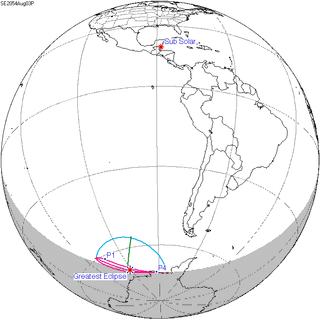 Partial |
122 | January 27, 2055 Partial | |
| 127 | July 24, 2055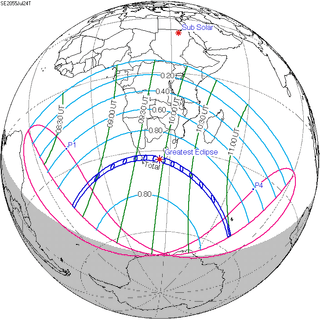 Total |
132 | January 16, 2056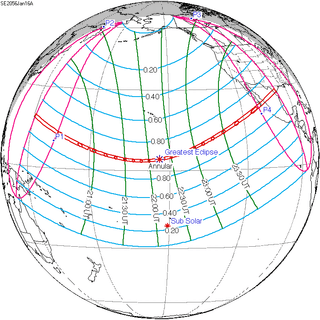 Annular | |
| 137 | July 12, 2056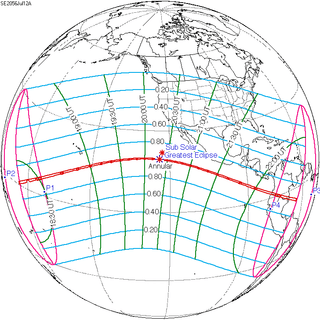 Annular |
142 | January 5, 2057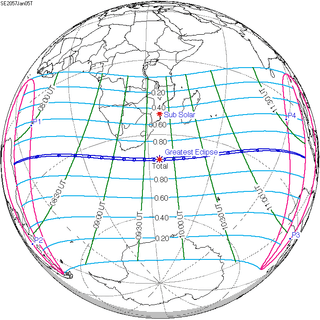 Total | |
| 147 | July 1, 2057 Annular |
152 | December 26, 2057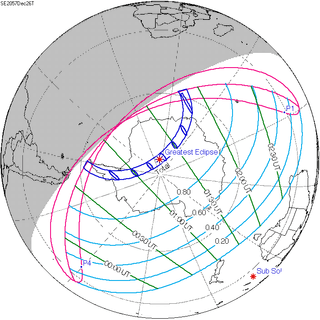 Total | |
| 157 | June 21, 2058 Partial | |||
Metonic series
The metonic series repeats eclipses every 19 years (6939.69 days), lasting about 5 cycles. Eclipses occur in nearly the same calendar date. In addition, the octon subseries repeats 1/5 of that or every 3.8 years (1387.94 days). All eclipses in this table occur at the Moon's ascending node.
| 21 eclipse events between June 21, 1982, and June 21, 2058 | ||||
|---|---|---|---|---|
| June 21 | April 8–9 | January 26 | November 13–14 | September 1–2 |
| 107 | 109 | 111 | 113 | 115 |
| June 21, 1963 | April 9, 1967 | January 26, 1971 | November 14, 1974 | September 2, 1978 |
| 117 | 119 | 121 | 123 | 125 |
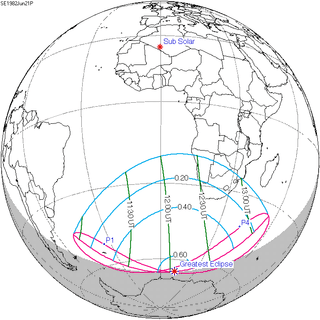 June 21, 1982 |
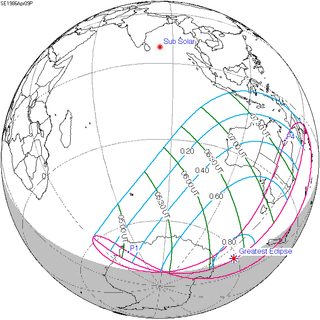 April 9, 1986 |
 January 26, 1990 |
 November 13, 1993 |
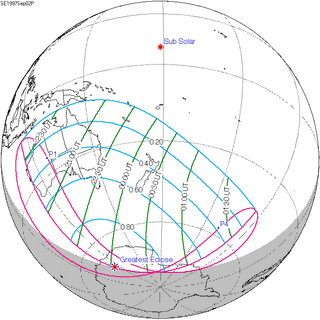 September 2, 1997 |
| 127 | 129 | 131 | 133 | 135 |
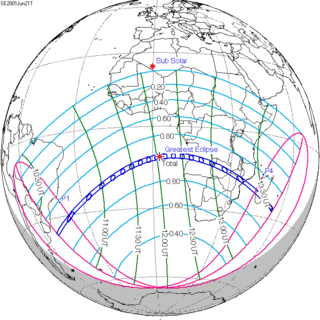 June 21, 2001 |
 April 8, 2005 |
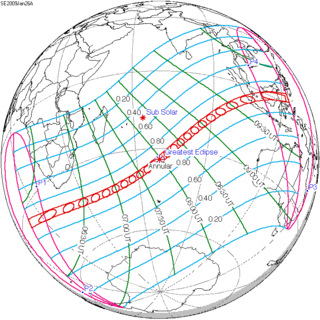 January 26, 2009 |
 November 13, 2012 |
 September 1, 2016 |
| 137 | 139 | 141 | 143 | 145 |
 June 21, 2020 |
 April 8, 2024 |
 January 26, 2028 |
 November 14, 2031 |
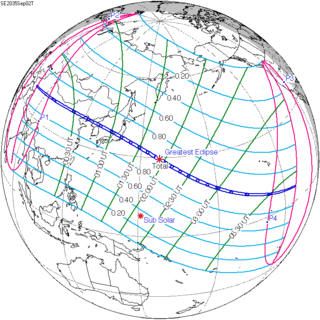 September 2, 2035 |
| 147 | 149 | 151 | 153 | 155 |
 June 21, 2039 |
 April 9, 2043 |
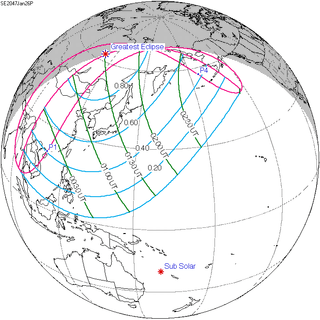 January 26, 2047 |
 November 14, 2050 |
 September 2, 2054 |
| 157 | ||||
 June 21, 2058 | ||||
References
- van Gent, R.H. "Solar- and Lunar-Eclipse Predictions from Antiquity to the Present". A Catalogue of Eclipse Cycles. Utrecht University. Retrieved 6 October 2018.
.jpg)
